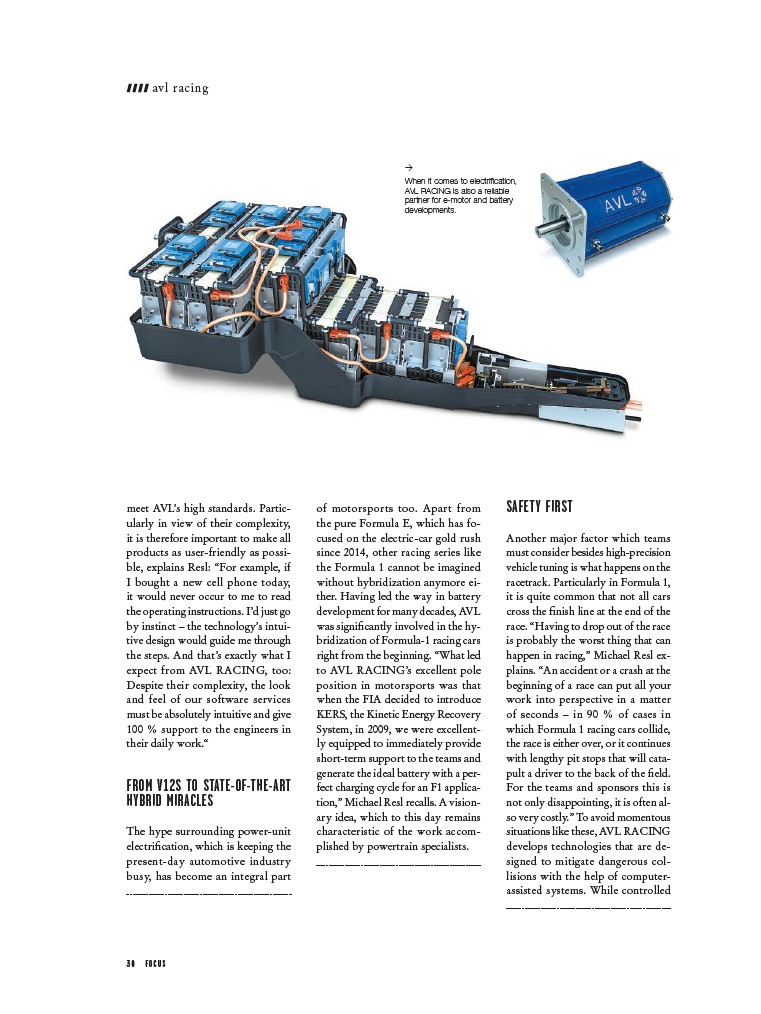
meet AVL’s high standards. Particularly
in view of their complexity,
it is therefore important to make all
products as user-friendly as possible,
explains Resl: “For example, if
I bought a new cell phone today,
it would never occur to me to read
the operating instructions. I’d just go
by instinct – the technology’s intuitive
design would guide me through
the steps. And that’s exactly what I
expect from AVL RACING, too:
Despite their complexity, the look
and feel of our software services
must be absolutely intuitive and give
100 % support to the engineers in
their daily work.“
FROM V12S TO STATE-OF-THE-ART
HYBRID MIRACLES
The hype surrounding power-unit
electrifi cation, which is keeping the
present-day automotive industry
busy, has become an integral part
3 0 F O C U S
of motorsports too. Apart from
the pure Formula E, which has focused
on the electric-car gold rush
since 2014, other racing series like
the Formula 1 cannot be imagined
without hybridization anymore either.
Having led the way in battery
development for many decades, AVL
was signifi cantly involved in the hybridization
of Formula-1 racing cars
right from the beginning. “What led
to AVL RACING’s excellent pole
position in motorsports was that
when the FIA decided to introduce
KERS, the Kinetic Energy Recovery
System, in 2009, we were excellently
equipped to immediately provide
short-term support to the teams and
generate the ideal battery with a perfect
charging cycle for an F1 application,”
Michael Resl recalls. A visionary
idea, which to this day remains
characteristic of the work accomplished
by powertrain specialists.
SAFETY FIRST
Another major factor which teams
must consider besides high-precision
vehicle tuning is what happens on the
racetrack. Particularly in Formula 1,
it is quite common that not all cars
cross the fi nish line at the end of the
race. “Having to drop out of the race
is probably the worst thing that can
happen in racing,” Michael Resl explains.
“An accident or a crash at the
beginning of a race can put all your
work into perspective in a matter
of seconds – in 90 % of cases in
which Formula 1 racing cars collide,
the race is either over, or it continues
with lengthy pit stops that will catapult
a driver to the back of the fi eld.
For the teams and sponsors this is
not only disappointing, it is often also
very costly.” To avoid momentous
situations like these, AVL RACING
develops technologies that are designed
to mitigate dangerous collisions
with the help of computerassisted
systems. While controlled
avl racing
>
When it comes to electrifi cation,
AVL RACING is also a reliable
partner for e-motor and battery
developments.